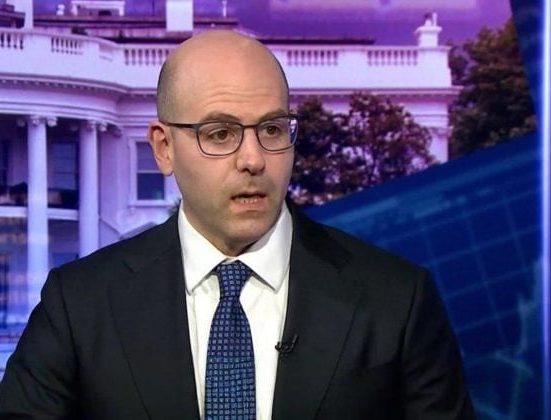As we’ve passed the midpoint of the year, it’s easy to drift into autopilot mode. But financial plans, like life, don’t always go as expected.
A lot can shift in seven months — career changes, market moves, surprise expenses or windfalls.
If your financial plan hasn’t evolved alongside you, now is a great time to check in and course-correct — particularly if you’re nearing retirement.
Sign up for Kiplinger’s Free E-Newsletters
Profit and prosper with the best of expert advice on investing, taxes, retirement, personal finance and more – straight to your e-mail.
Profit and prosper with the best of expert advice – straight to your e-mail.
This isn’t about drastic change, but thoughtful recalibration to keep your financial strategy aligned with your goals.
The Kiplinger Building Wealth program handpicks financial advisers and business owners from around the world to share retirement, estate planning and tax strategies to preserve and grow your wealth. These experts, who never pay for inclusion on the site, include professional wealth managers, fiduciary financial planners, CPAs and lawyers. Most of them have certifications including CFP®, ChFC®, IAR, AIF®, CDFA® and more, and their stellar records can be checked through the SEC or FINRA.
Here are five high-impact steps to realign your finances, plus one bonus outside-the-box idea.
1. Update your holistic net worth
Assess where you stand. Create a centralized, easy-to-update list of assets and liabilities including checking/savings accounts, retirement and brokerage accounts, real estate, private business equity, even stock options or restricted stock units (RSUs).
The goal of this exercise is to identify patterns.
- Are you too cash-heavy?
- Is your debt-to-asset ratio creeping up?
- Have certain investments grown out of proportion to your plan?
A good general rule is that any holding that’s drifted more than 5% to 10% from its target deserves review.
Don’t rebalance for balance’s sake — recalibrate in alignment with your goals.
For those approaching retirement, time horizon and risk tolerance are key priorities in any rebalancing.
2. Turn your tax return into a planning road map
I’m a huge advocate for the planning value contained within an annual tax return. If you haven’t reviewed your 2024 return, it’s not too late to leverage it to identify missed opportunities and future adjustments.
Are you maxing out retirement contributions, including catch-up contributions for those 50 and older? Did you owe taxes unexpectedly or get a large refund (which might suggest withholding is off)? Are you taking advantage of charitable deductions?
If so, you can adjust W-2 withholdings or quarterly estimated payments now, while there’s still time to make a difference.
If your income is projected to be lower than usual this year, it might be an opportunity to lock in a lower tax rate on future growth by converting part of a traditional IRA or 401(k) (if permitted by the plan) to a Roth.
A Roth conversion is particularly advantageous if markets dip back down from where they are currently.
3. Stress-test your insurance and estate plan
For families, particularly those with minor children, adequate life insurance coverage is essential. But your protection strategy shouldn’t stop there.
Regularly review disability coverage, umbrella liability, long-term care and homeowners’ or auto policies. As your lifestyle and net worth evolve, so should your coverage.
Estate planning deserves the same attention. If you haven’t revisited your estate documents in more than five years, or there’s been a major life event (birth, death, divorce, remarriage), your plan might no longer reflect your intentions.
Double-check that all accounts that need beneficiaries are correct. These override your will, and they’re easy to overlook because they’re not all in one place.
If you haven’t yet created a will or formal estate plan, now is the time. This secures your legacy and gives you peace of mind, knowing your wishes are clearly documented and loved ones are protected.
4. Recalibrate your investment strategy with purpose
As fall is just around the corner, now is an opportunity to look beyond performance and ask: “Are my investments aligned with what I want from life?” Revisit your time horizons, risk tolerance and goals.
If you haven’t had a formal investment review in 12 months, schedule one with your adviser to look at:
If you’re within five years of retirement, consider a “pre-retirement dry run,” in which you attempt to live off your expected retirement income for one to three months to test the validity of your plan, both practically and emotionally.
5. Get strategic with charitable giving and medical expenses
Late summer is a powerful planning window — far enough into the year to understand your trajectory, but with time left to make strategic moves.
Looking for expert tips to grow and preserve your wealth? Sign up for Building Wealth, our free, twice-weekly newsletter.
If you’re philanthropically inclined but not hitting the standard deduction threshold annually, consider “bunching” multiple years’ worth of gifts into one tax year.
This allows you to itemize in the current year and take the standard deduction the next. This can be done by:
If you’ve already incurred significant out-of-pocket health care costs, or expect to in the second half of the year, now is the time to plan while you still have flexibility:
One more idea: Practice purposeful planning
We often remind clients that the truest purpose of their wealth is to allow them to live intentional lives in alignment with their goals.
One small way is to begin building a “purpose fund” into your plan as a reminder of the big picture. This serves as money set aside for an experience with your family, a special gift for relatives or a one-time charitable contribution for a special cause.
A final word
Your financial life isn’t just a series of accounts — it is a living, breathing system that should evolve with you. It’s important to take a step back, reflect and recenter your plan around what matters most.
For those nearing retirement, checking in to make adjustments provides reassurance you’re staying on track.
When your financial strategy is both technically sound and personally meaningful, it becomes more than a plan — it becomes a source of confidence, clarity and intention.







